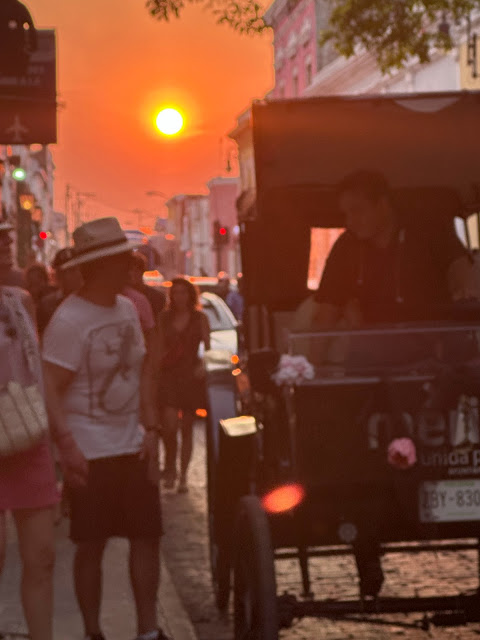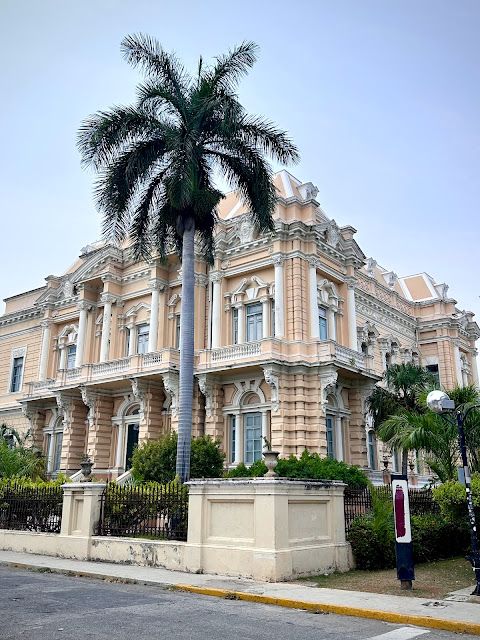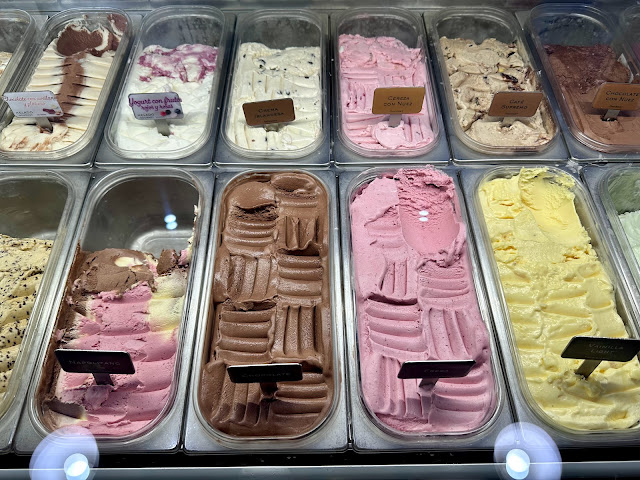The Anthropologists of Cochin
when was the last time you visited a town and ran ino a gaggle of anthropologists??
i am talking about the educated class of Cochin in Kerala in India
Long time ago, in Melbourne, I remember the Shaliach from Israel telling us
We are different because we are curious ,not that we are more intelligent than others.
Others, especially Muslims from Malaysia or Senegal think we are different because we are smarter
Not the case, but we are curious, a result of millenial hardships and contacts across the continents.
(
a cochini kippah made by Taha long time care taker of the late personality of Jew Town, Sarah Cohen being worn in the newly tolerant Saudi Arabia)
Are there other communities ? other histories shaped by constant international contacts of diversity over the centuries?
I arrived in Cochin loaded with some umbilical memory? and from the begining it was clear that this city was different, but how to to unlock the mystery.
During first visits to a new city, the contacts are shopkeepers, vendors and hotel clerks.
(this seasonal visiting vendor, a tribal woman from Rajasthan, is not in Cochin to gouge visitors unlike some other recent traders, but to make a living. On each of my visits I search for her among the vendors ar the Vasco da gama park. she now like all vendors accepy phone-pay.)
their knowledge of their city usually is mired in their daily necessities of making a living..
I was invited by the then curator of Indo Portuguese museum at Bishops house, but it was neither Indian or Portuguse but a showcase for christian architecture and parapharnelia. That further increased my curiosity who spoke Portuguese her? like Senhor Texiera a a similar port in Malay peninsula conquered by Alphonso de Alburquerque who sailed from this very port …..there is a fish market , alburquerque landing near the Dutch godown Aspinwall building in Fort Cochin.
Alas I was informed there used to be Cristao speaking descendants of the portuguese in the Vypeeen Island nearby, but no more.
(a slice of jewish history of Cochin)
One day, i was visiting the Synagogue founded in 1568 by Jewish merchants who had settled in the newly commercial port of Cochin, after the disappearance of the magnificent port of Muziris current day Kodangallur few kms north . I had become friends with Mr Itzhak Hallegua who gave me some insight into the caste system of this small jewish community at the brink of extinction (it is !!)
I spied a book store across the street and went in and I was impressed by the collection of books. I was just getting interested in modern Indian literature by authors such as Amitav Ghosh, Pankaj Mishra etc.. Who is the colllector of these books, I enquired of the young lanky, like every one else, man with a distant manner. He is upstairs and he is busy. I handed him a 5 peso cuban note and said.. when you see him the next time, hand him this note and congratulate him on his good taste. Please wait a minute sir, the lanky dravidian man disappeared only to appear a minute later, the Boss would like to see you , sir. I went to his office and a man with serious and jovial manner combined in an affectionate manner warned me against bribing under Union regulations of India
Thus began my longstanding friendship with this gentleman with pious manner, a remnant of the living history of the original christians of this region.
(an unforgettable evening at Francis Taverna in Queros street, but who was this potuguese gentleman)i began to meet people who could articulate well their lived in experiences, add delights to twisted histories of this interesting town where there are multiple nationalities (indian), religions, cuisines and architectural styles.. When you are interested, you could meet an expert in that field and it is facilitated by a friend who appreciates and more importantly respects your interest.
Let me give you an example
The owner of the hotel I was staying at in Cochin knew of my interest in the history of Cochin. He took time off his busy schedule to introduce me to the erudite historian of Cochin, who took time off from his schedule to spend a couple of hours with me.
I realize that in the west such thing happens very rarely as there is less of an appreciation of this type of community building.
Native people of the USA has taught me the difference how the social communication differs from their intuitive understanding of social interactions
White people are interested in what you can do for them ?
and the indigenous person is interested in What can I do for you ..
Among the erudite and the interested when the interests are genuine and surpassed the commercial nature so omnipotent, the Malayalee educated ((not just university educated but in the matters of the world), the concept of What can I do for you? is well entrenched…
While the desire to belong to an intellectual community is strictly voluntary and specific, which has tremendous intellectual satisfaction, obviously, the general desire is to belong within a strong cultual millieu. Most of the friends I have made, strongly expressed their atttachment to their particular community, not in the nationalistic or religious sense that one sees in other parts of the world..
The community cannot be dreamt up or envisioned and then laws promulgated so that a membership is defined and then an expected social comraderie which does not take into consideration a greater good, but places an interest in individual gain and connection that cannot be genuinely created.
Two examples come to mind, in the larger picture is Islam as a religion or any other God based religion for that matter and the second is a construction based on common language, such as Spanish speaking people being termed Hispanic without actually existence of a common single Spanish speaking communityin the USA. A black man in flowing robes wearing symbols of islam will find much more animosity and lack of acceptance whether in USA or Asia rather than warm hospitality based on a perceived commonnes of his faith. Islam might satisfy his or her individual desires of unison with God or purpotted righteousness, but it certainly lacks a firm social internationalistic foundation to demonstrate individual contribution to the common good. A shopkeeper friend of mine from Cochin lamented the fact that Muezzins were banned from announcing the prayers in American cities, without pausing to think that it would disturb and be considered a nuisance by most of the inhabitants..
What is amazing is that Cochin has managed to construct bunches of communities over the course of time. Apart from the large religious divisions {Hinduism Islam and Christianity), they have managed to cling on to many traditions , including language, food and prayers and rituals as well as value systems of ancient memory
There are multitudes of divisions between the various religious adherents and the caste system is ancient , older than the Islam and Christianity and its influence on it cannot be forgotten.
Thus being a resident of Cochin, curious by nature and free of everyday worries of survival, you automatically become an anthropologist. You have to know the difference between Maratti and Gujerati comunities, distinguish between Kutchi muslims from Laccadive muslims, food customs and prohibitions and also follow social codes of behaviour and maintaing ones own distinct cultural affiliation and also fight incursions from recent migrants to this land which has welcomed foreigners for millenia (kashmiris, biharis etc)
(an unusual dislay of tolerance displayed at the Tower House 17th century Hotel in Fort Cochin. The architecture is exquisite and has a Queros suite, in honour of the portuguese gentleman we were searcing for earlier)For a professional trained in Anthropology like myself, it is a canvas or a museum or fast moving film of history and life. I can distinguish the distinct dravidian look which is closer to australian aborigine than to a upper class Malayalee. Slight differences in colour are mentioned but not tinged with hatred ((recently converted christians)
What is that Divehi script doing on the walls of a building along Bazaar road in Mattancherry?
(the dutch cemetery in Fort Cochin, reminded me of the Dutch cemetery in Malacca in Malaysia which has similar historic colonial connections like Fort Cochin: Hindu King from Sumatra. Gujerati merchants who spread Islam. Visits by Zheng He/Cheng Ho , the greatest naval admiral under the Ming Dynasty, Portuguese as mentioned conquered by Alburquerque who was governor of Portuguese India, then the Dutch and then the British)
Kerala to me as a student of history and of the future, is a veritable laboratory. I live fully in the present while i am in Fort Cochin, while aware of the glorious past of this port as well as the promise of the future it offers to sell you ….
This note was written full of love for this city by this frequent visitor (at least three times a year except the year 2020 and 2021). For the identification purposes only , in 2023, I consider myself 1//3 Cuban 1/3 French and 1/3 Israeli.. Written at Quiberon, Brittany in France a day after leaving Cochin after an extremely interesting time with individuals of greater tenacity of knowledge than the ones I come across in Miami in particular and USA in general
Sir Robert Bristow is credited with the miracle of the modern day Cochin Seaport and the creation of Wilingdon Island , named for the British Viceroy. He lived in this house, now a Heritage hotel , Old Lighthouse Hotel. I continue to stay there and have forged good relationships with the owners and the workers . Thank YouIt is an incredibly relaxing place with breeze from the Arabian sea constantly stroking you to slumberdom. He married a local Anglo Indian lady and was refused admission to the British Only, Cochin Club. they founded the Lotus Club in Warriam Road in Ernakulum welcoming all nationalities and caste and creed.
(symbols of religious tolerance in Fort Cochin)I asked chatgpt ai to edit the above and here is its comment. Embrace Artifical Intelligence and dont be afraid of it .
It seems that you are sharing your personal experience of visiting Cochin, Kerala, India and interacting with the educated and diverse community of the city. You mention your curiosity about the city's history, which led you to meet experts and enthusiasts who were willing to share their knowledge and experiences with you. You also point out the strong sense of community and attachment to cultural heritage among the people you met, which is not based on nationalistic or religious affiliations.
It is interesting to note that you highlight the difference in social communication styles between the Western and indigenous cultures, with the former being more focused on individual gain and the latter on mutual benefit. You also mention the importance of genuine interest and respect for building meaningful connections and intellectual communities.
Regarding your question about other communities shaped by constant international contacts over the centuries, there are many examples across the world. For instance, the port cities of Southeast Asia, such as Melaka in Malaysia, were centers of trade and cultural exchange between different civilizations, resulting in the creation of hybrid cultures and communities. Similarly, the Silk Road connecting Asia and Europe facilitated the exchange of goods, ideas, and technologies, leading to the development of diverse communities along its route.
THE POLEMICS OF THE ORIGIN OF JEWISH PEOPLE IN COCHIN CONTINUE WHILST THE COMMUNITY IS EMPTIED OF ITS SOULS.
1344 destruction of Muziris current day Kodungallur and there was a Jewish Community there, which is well documented.
Neither Vasco da Gama and Inquisition had arrived , Cabral came in 1500.
The Paradesi Jews of Cochin are an amalgam of Jewish merchants who arrived at these shores over the course of time. A history of Abraham ben Yiju from Mahdi in Tunisia who lived in Mangalore in 13th century is well documented. All traders were called Paradesi at that time.
Nehemiah Mutta was a cabbalist scholar who came to Cochin from Yemen.
The currently existing synagogue was built in 1568. It was built by Samuel Castiel, David Belila and Joseph Levi . they were from Aleppo, Jerusalem and Baghdad.
The successful Jewish merchant under the Dutch, Ezekiel Rahabi was either syrian or Yemeni
So predominantly the Paradesi jewish community was of Mizrachi origin (Middle Eastern) rather than Spanish or Portuguese but Moses Peyrera de Paiva arrived in 1685 and mentions the caste system of the jews of cochin.
While the Malabari Jews (who looked like their Indian neighbours) had synagogues and settlements much older than the Paradesi Jews of Cochin, they lacked documented connections to the outside jewish world except noted by Ibn Batuta or the jewish Benjamin Tudela of the 12th century .
Whatever the case, the strong connection of both communities to Yemen and Oman cannot be omitted. I was reminded that this Yemeni connection was not strictly limited to the Jews of Cochin but also of Muslims of Cochin.















































